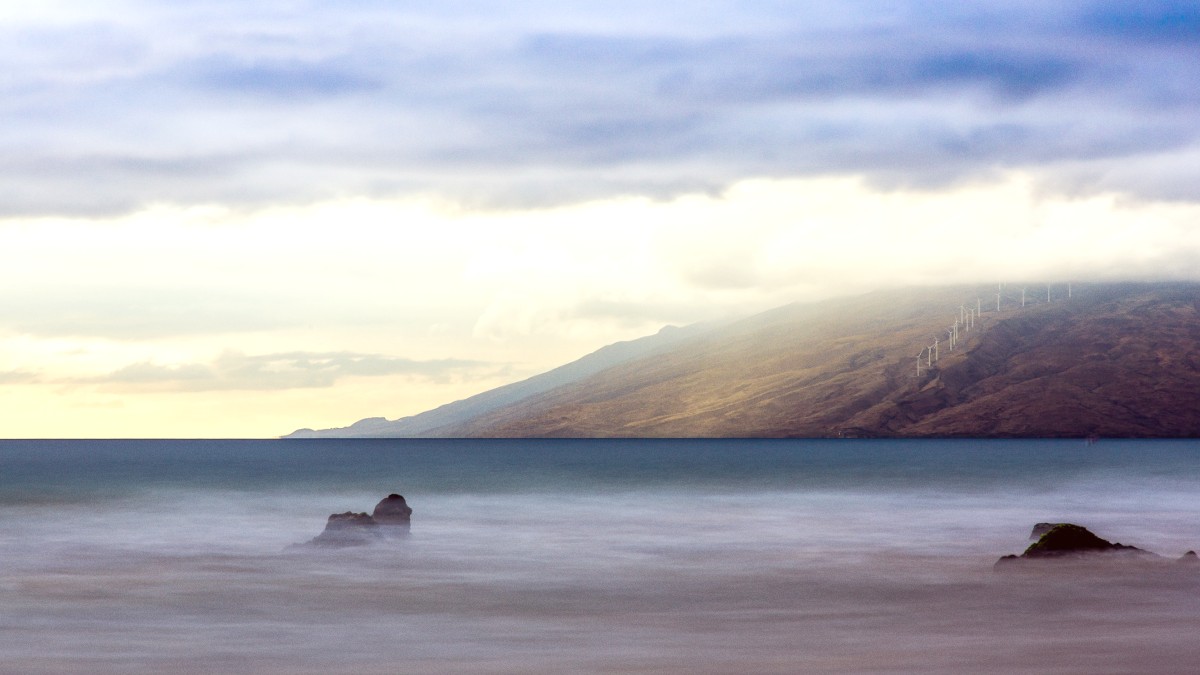
Hawaii, USA
Moloka'i has unique landmarks rooted in its history and natural formations.
The island's commitment to preservation means these sites have an authentic, untouched character.
Many of these sites tell stories of Moloka'i's unique past and community spirit.
The island's main town retains a historic charm. It has old storefronts and a laid-back, rural Hawaiian atmosphere, offering a glimpse into Moloka'i's past.
The entire park serves as a living memorial. Grave sites, monuments, and preserved buildings are part of the guided tour, fostering a deep sense of reflection.
Moloka'i's natural beauty offers diverse experiences, from towering cliffs to serene beaches.
Offers scenic views and forest trails for short walks.
Managed by The Nature Conservancy, protects rare native Hawaiian rainforest. Access is limited and needs a 4x4.
Among the tallest sea cliffs in the world. View from Kalaupapa Overlook, by air tour, or from the ocean.
A geological formation in Pala'au State Park with cultural significance.
Humpback whales are visible offshore from December to May from coastal viewpoints or boat tours.
Various native and introduced bird species reside in different habitats, especially in forested areas like Kamakou Preserve. Green sea turtles are a common sight in calm nearshore waters.
Papohaku Beach (West End): A vast, often deserted white sand beach. Dixie Maru Beach (West End): Has calm, shallow waters, making it suitable for families. Kapukahehu Beach (Swim Beach): Good for swimming. Sandy Beach (East End): Small, scenic beach. Kawakiu Beach (West End): Remote, needs a dirt road for access. Murphy's Beach (East End): Popular for snorkeling when calm.
Moloka'i's two main volcanic peaks define its landscape. The dramatic north shore sea cliffs resulted from massive landslides in ancient times, showing powerful geological forces.
Moloka'i has no significant natural lakes. Streams and waterfalls are mainly found in the lush East End valleys. These waterways contribute to the island's green and landscape.
Moloka'i holds many lesser-known spots that offer unique experiences for those willing to explore beyond the main attractions.
Moloka'i's quiet character means few new, commercially developed destinations. Its charm comes from preservation and lack of 'emerging' tourist development.
Many small, unnamed beaches and viewpoints occur along the coast, waiting to be discovered.
Capture the island's natural grandeur and unique perspectives.
Document the island's unique character and historical charm.
Discover secluded spots that few tourists encounter.
Moloka'i's untouched state is a treasure. Explore responsibly to preserve its character.
Moloka'i's allure lies in its authenticity and the chance to experience Hawaii as it once was. Embrace the island's tranquil pace.
Its quiet character means few new, commercially developed destinations. The island works to maintain its quiet character.
Moloka'i boasts dramatic sea cliffs, lush valleys, and vast, often deserted beaches, offering breathtaking natural beauty.
Sites like Kalaupapa National Historical Park and ancient fishponds tell stories of Moloka'i's profound historical and cultural past.
Explore lesser-known spots like secluded beaches and charming small towns for a truly unique and quiet experience.
Access to Kalaupapa National Historical Park is highly restricted. Entry is granted only via an approved tour operator (if available).
Check tour availability on GetYourGuideAccess to Mo'oula Falls requires a guided hike with a local family, booked in advance to preserve its sanctity and ensure safety.
Find cultural tours on GetYourGuidePermits are necessary for camping in county parks like Papohaku Beach Park and One Ali'i Beach Park. Obtain them in advance from Maui Parks and Recreation.
Roads to some remote areas, like Kawakiu Beach or parts of the East End, can be unpaved or winding. Drive with caution.
Be cautious of strong currents on some beaches, especially Papohaku. Always check ocean conditions before entering the water. Never turn your back on the ocean.
Moloka'i's museums and cultural centers preserve and share the island's unique heritage.
Moloka'i's landscape is dotted with historical sites, offering a tangible connection to its ancient and more recent past.
Moloka'i's charm comes from its preservation and lack of 'emerging' tourist development.
Many small, unnamed beaches and viewpoints occur along the coast, waiting for discovery.
Moloka'i welcomes mindful visitors. Experience its beauty while respecting its land and people.
Certain areas on Moloka'i hold deep spiritual and cultural significance. Approach these sites with reverence.
Moloka'i's pristine environment depends on visitor care. Help keep it healthy for future generations.
Your purchases can make a direct positive impact on Moloka'i's community.
This helps sustain the island's unique culture and economy.
These interactions can enrich your understanding of Moloka'i.
Prioritize safety to fully enjoy Moloka'i's adventures.
Minimize your footprint by conserving resources and properly disposing of waste.
Learn and respect local customs, traditions, and the Hawaiian language.
Choose locally-owned businesses to help Moloka'i's economy thrive.